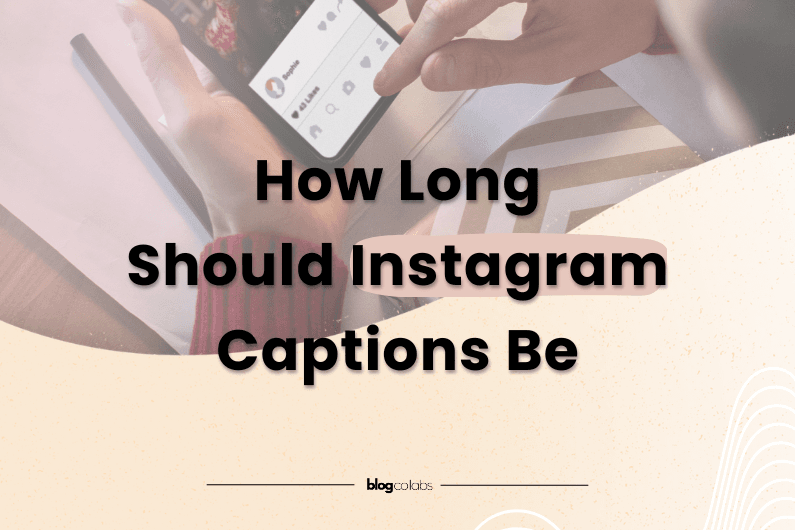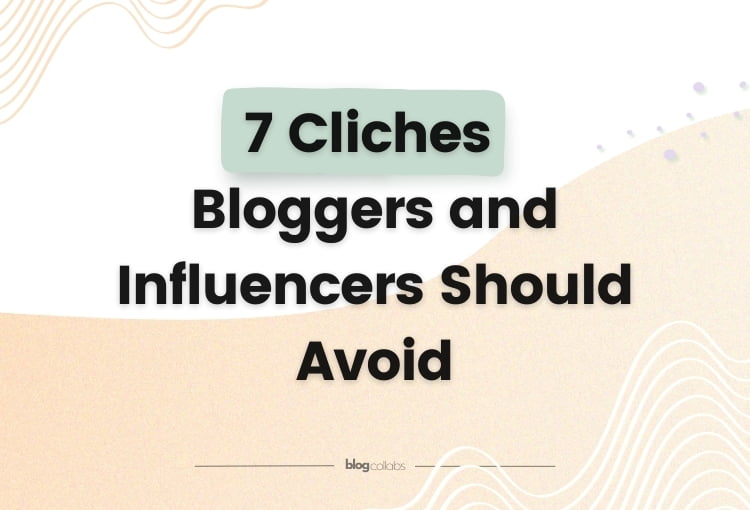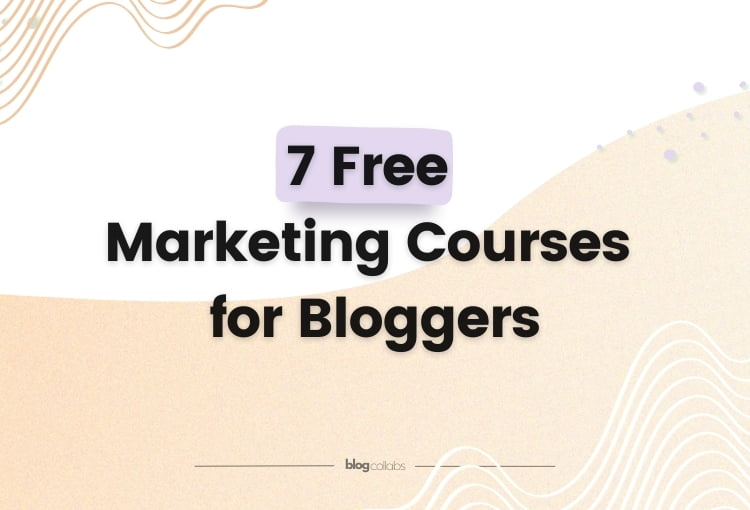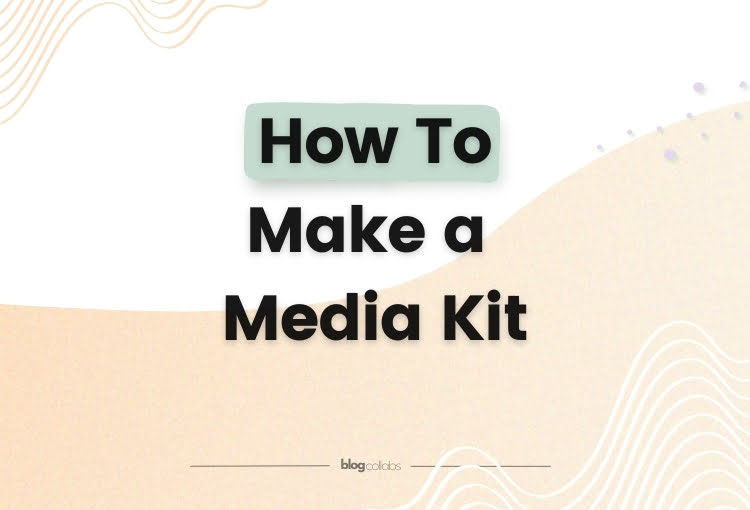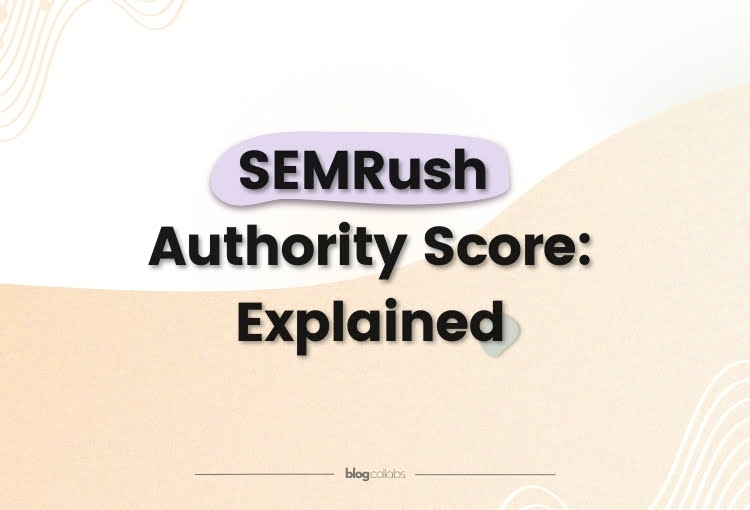How Long Should Instagram Captions Be
When it comes to crafting the perfect Instagram captions, there’s no one-size-fits-all solution. Should your caption be short and snappy, or long and detailed? Well, it honestly depends on your purpose, audience, and even the platform’s ever-changing algorithm.
Whether you’re a casual user sharing personal snapshots, a content creator aiming to grow your following, or a brand trying to increase engagement, your caption length matters a lot more than you might think. So in this article, we’ll take a look at the ideal caption length for different scenarios and look at good Instagram captions versus bad ones.
Source: Unsplash (CC0)
Instagram Captions for Casual Users
Not everyone uses Instagram for business reasons or to get clout. I know there are plenty of people who just want to share some cool stuff they’ve made and don’t really care much about getting rich and famous.
So if you’re one of those casual Instagram users who isn’t concerned with building a brand or maximising engagement, your caption length is really up to you! However, there are a few simple tips that can enhance your posts and make them more engaging so they stand out. After all, who wants to create art that doesn’t get noticed?
Keep It Light and Fun
Instagram is, at its core, a platform for sharing moments. Use your caption to add context or a clever anecdote about your image or video. Humour works great here!
For example, something like: “Tried to make a healthy dinner… ordered pizza instead 🍕 #balance” is short, snappy, and pretty relatable!
Hashtag Generation Tools
Casual users often overlook hashtags, but they can be a great way to increase the visibility of your posts without feeling too strategic.
Some examples include: #sundayvibes #weekendmood #foodie. These are short and often used on websites like Instagram. Check what other hashtags people are using as well!
Trending Phrases
Keeping your captions in line with popular trends or memes can boost engagement with little effort. Popular phrases like “Just living my best life” or “When life gives you lemons…” add a touch of relatability that casual followers enjoy.
Short and Sweet
If your post is more about the image or video, a short caption works wonders and keeps the attention on the photo or video you’ve posted. Just remember to keep it minimal but meaningful!
Short phrases like “Sunsets and good vibes only 🌅” are a great choice for those amazing evening pictures.
Be Yourself
Your Instagram feed is really all about you. It’s a reflection of your personal life and as such, it should be something that really resonates with you on a personal level. Don’t be pressured into conforming to what other people do–write what feels natural to you and use it to personalise your page and content!
Instagram Captions for Influencers and Content Creators
If you’re an influencer or content creator, Instagram captions aren’t just a chance to share a witty line–they’re one of the most important components of building engagement and growing your following. Longer captions tend to work well here, but they should be carefully crafted to hold the audience’s attention.
So here are a couple of strategies that you can use.
Storytelling
Instagram is honestly one of the best platforms for micro-blogging these days, more so than places like Facebook and X, and many influencers use longer captions to share personal stories, give behind-the-scenes insights, or dive deep into a topic. Storytelling makes your audience feel connected to you, which is important for fostering a loyal community.
Here’s a good example of storytelling:
“I still remember my first trip to Japan.. it was the moment I realised how powerful travel could be. Meeting new people, seeing places that took my breath away, and pushing my boundaries–this is why I love exploring the world. Swipe to see my top travel tips for first-timers!”
Something like this resonates with the audience because who doesn’t remember the first time they travel to somewhere they love? It’s relatable, and the end has a call to action that encourages users to engage with your posts.
And here’s a bad example:
“Travel is so amazing. You should do it too! #wanderlust #blessed”
Right so this example isn’t necessarily bad, especially if you’re just a casual Instagram user. But we’re talking about building brands for influencers and content creators. Something short and pointless like this isn’t going to cut it, which is why I’m calling it a bad example. Adding hashtags won’t automatically get your posts noticed, and the call-to-action here is weak. “You should do it too!” is lazy and has no impact, but I still see it pretty often.
Call-to-Actions
So we’ve mentioned it a little in the previous section, but you should always invite your audience to engage with your post. A simple “What do you think?” or “Drop your suggestions below” can encourage comments and boost engagement. The Instagram algorithm loves engagement, so the more your followers interact, the more your posts will be shown to others.
Here’s a good example:
“I’m planning my next adventure—where should I go next? Drop your favourite travel spots in the comments! 🌍”
If there’s something I’ve learned about Instagram (and social media in general) it’s that people LOVE to share their own opinions about stuff, especially when it comes to topics like travel where you can kinda appear like you’re an expert in something. Dropping a call-to-action like “drop your favourite travel spots in the comments” is like inviting everyone to educate you on their favourite travel spots. It’s fantastic for engagement and you can get some really detailed answers, and that leads to more chances for engagement.
And here’s a bad example:
“Like this post if you agree that travelling is the best!”
These kinds of call-to-actions are lazy and bordering on the line of begging for interactions. Plainly and shamelessly asking for interactions like “drop a like if you x” isn’t a good look, and you should avoid it at all costs.
Instagram Captions for Businesses and Brands
For businesses, Instagram captions must do more than just look appealing–they’re a tool to drive action and conversions. Whether you’re encouraging your followers to visit your website, purchase a product, sign up for a newsletter, or simply engage with your content, the caption should succinctly communicate the value you offer. Every word should work toward motivating the audience to take the next step.
In this section, we’ll break down some key strategies for writing effective captions for businesses, provide more examples, and explain why certain approaches work better than others.
Value Proposition
A business caption should lead with a value proposition. This is one of the most crucial aspects of any marketing message. Essentially, your caption should answer the question, “What’s in it for me?”.
You can plainly see when a caption is from a business or not, and that’s fine. I don’t mind seeing businesses advertising things to me on Instagram–but that doesn’t mean they can be sloppy and lazy. If you’re going to show up on my feed, at least show me why I should care about your product or service, and that means quickly and clearly explaining the value you offer. The more compelling, concise, and relatable your value proposition, the more likely it is to engage your audience and lead them to take action.
This is a good example:
“Our eco-friendly water bottles aren’t just good for the planet—they’ll keep your drinks cold for 24 hours! 🌍❄️ Available now with free shipping. Tap the link in bio to shop!”
And here’s why it works:
- Highlights the value: This caption gets straight to the point by emphasising a specific benefit of the product: it’s eco-friendly and keeps drinks cold for 24 hours. This directly addresses what the customer cares about, which is convenience and sustainability.
- Makes it relatable: Many customers are becoming more environmentally conscious, so the mention of “eco-friendly” makes the product immediately relatable to this growing market.
- There’s an offer: The mention of free shipping adds extra value and urgency, encouraging the follower to make a purchase now.
- Clear call-to-action: The caption ends with a clear, actionable step that just says “Tap the link in bio to shop.” This gives users an obvious next step, driving traffic to the brand’s online store.
So in short, this caption not only informs the audience about the product but also tells them exactly what to do next. It’s short, sweet, and highly effective.
And now here’s a bad example:
“We sell water bottles. Check them out on our website. #buynow #waterbottles”
This doesn’t work for a few reasons:
- Lacks specific value: The problem with this caption is that it doesn’t highlight why someone should care about the product. Simply stating “we sell water bottles” is too vague. What makes these water bottles different from any other? Why should the customer purchase from this business instead of a competitor?
- Weak call-to-action: The CTA is unclear and uninspiring. Saying “Check them out on our website” doesn’t give the user a strong reason to click. There’s no urgency, no incentive, and no indication of why visiting the website is worth their time.
- Overuse of hashtags: While hashtags can help with discovery, generic ones like #buynow or #waterbottles aren’t going to add much value. They’re unlikely to drive meaningful engagement, and overloading the caption with irrelevant hashtags can make the brand seem spammy or desperate.
Call-To-Actions for Businesses
Much like adding a call-to-action as an influencer or for building a brand, business captions should also include one. Every post should drive a specific action, whether it’s commenting on the post, visiting a website, signing up for an event, or purchasing a product. It needs to be clear and persuasive, making the next step easy for the follower.
So let’s start with a good example:
“Don’t miss out! Our 50% off sale ends at midnight—click the link in our bio to shop now!”
This works because:
- Urgency: The phrase “Don’t miss out!” and the mention of a time limit (“ends at midnight”) create a sense of urgency, which encourages the audience to act quickly. Urgency is a powerful psychological trigger that can motivate users to take immediate action. It doesn’t matter how much you see these kinds of posts–we always fall for it and we’re always curious.
- Clear action: The action step–”click the link in our bio to shop now”–is straightforward and leaves no room for confusion. It tells the audience exactly what they need to do to take advantage of the offer.
- Clear incentive: The 50% off discount is a tangible benefit that adds value to the product, making it more likely that people will click through and make a purchase.
In this good example, the caption balances emotional triggers like urgency with clear instructions, ensuring that followers know both why they should act and how to do so. I see something like this and immediately think “Wow, 50% off? I should take a look–I don’t want to miss out!” which is why it’s so effective.
And now here’s a bad example:
“We have a sale going on. #shop #sale #50percentoff”
Noticing a trend here? Here’s exactly why it doesn’t work:
- No urgency: This caption lacks any sense of urgency or time sensitivity. “We have a sale going on” is way too vague and doesn’t create any motivation for the audience to act now. Without urgency, people are more likely to scroll past the post or forget about the sale altogether.
- Unclear CTA: There is no specific call-to-action in this caption either. Yes, it mentions the sale, but it doesn’t tell the audience what to do next. Should they click a link? Visit a website? Stop by a store? Without clear guidance, the follower is left to guess, which reduces the chances of a conversion. I’m lazy, I want to be told where to click or what to do, and if your brand caption doesn’t contain that information, I’m just going to scroll past your posts.
- Hashtag overload: Once again, the hashtags are generic and ineffective. Using #shop or #sale doesn’t add any value and can make the caption look like it’s trying too hard to gain visibility through irrelevant tags.
In this bad example, the caption doesn’t provide any compelling reason for the audience to act. It doesn’t clearly define what makes the sale special, what action the user should take, or why the sale matters to them. Without these elements, the caption feels flat and uninspiring–and that’s why nobody will take notice of it.
Offer Relatable and Specific Value
For businesses, one of the most important aspects of a caption is making it relatable to the audience. Generic claims like “We sell high-quality products” aren’t enough to capture attention. Instead, businesses should aim to highlight specific benefits that matter to their target audience and make those benefits feel personally relevant.
Here’s a good example of how to make things more relatable:
“Tired of carrying heavy bottles that don’t keep your drinks cold? Our lightweight, eco-friendly water bottles are designed for busy people like you. Stay hydrated, stay sustainable! 💧 Tap the link in our bio to get yours with free shipping!”
And here’s why it’s so effective:
- Addresses a pain point: This caption identifies a common problem (“Tired of carrying heavy bottles that don’t keep your drinks cold?”) and immediately offers a solution. This approach connects directly with the audience’s everyday frustrations, making the product feel like an essential improvement to their lives.
- It’s relatable: The phrase “busy people like you” personalises the message, showing that the brand understands its audience. I see this and think “Why yes, I am a busy person and I do want a water bottle that keeps my drink cool.” This makes the product feel way more relevant and tailored to the customer’s specific needs.
- Incorporates a benefit and a CTA: Once again, there’s a clear call-to-action (“Tap the link in our bio”), and the mention of free shipping adds extra value. Combining a solution to a pain point with an incentive (free shipping) creates a compelling reason for the audience to act.
This caption not only highlights the product’s features but also makes it relatable by focusing on the audience’s lifestyle and specific needs. It speaks directly to the customer, which is a key strategy for increasing engagement. You want people to feel like your product or service is perfect for them, and this is how you achieve that.
And now let’s end with a bad example:
“Check out our eco-friendly water bottles. They’re really good for the environment and available now on our website.”
I skipped out the hashtags this time because I’m starting to sound like a broken record, but here are the other reasons why it’s a bad caption:
- Too generic: The phrase “They’re really good for the environment” is vague and not specific enough. While eco-friendliness is an appealing feature for lots of people, this caption doesn’t explain why or how the product is good for the environment.
- No clear audience focus: This caption doesn’t make the product relatable or personal to the customer. Instead of connecting with a pain point or specific need, it offers a broad statement that could apply to any product. There’s no attempt to address what the audience might be looking for at all.
- Weak CTA: “Check out our eco-friendly water bottles” is a weak call-to-action. It’s passive and lacks the urgency or directness needed to compel users to visit the website.
In this bad example, the caption fails to make the product’s value clear and doesn’t effectively drive action. It reads more like an afterthought than a carefully crafted message designed to engage customers.
Reels Captions vs Post Captions: A Comparison
Instagram Reels and traditional feed posts serve different purposes on the platform, and as a result, their captions need to be approached a little differently. While post captions can be longer, more detailed, and designed for storytelling, Reels captions need to be short, engaging, and attention-grabbing.
So here are some differences to look out for:
Length and Attention Span
Post Captions: Traditional Instagram feed posts allow for up to 2,200 characters, giving you ample room for storytelling, sharing personal anecdotes, or providing in-depth explanations. Because posts tend to remain visible for longer, captions can afford to be more detailed and thoughtful. These longer captions can include multiple paragraphs, tips, and even a TL;DR summary for those who prefer skimming.
Reels Captions: With Reels, you’re competing for attention in a much faster-paced environment. Viewers typically watch Reels in quick bursts, so your caption needs to reflect this by being concise and impactful. Captions are often limited to just a few lines of text that complement the video content. Since Reels are all about dynamic, short-form content, the caption should follow suit–brief, punchy, and to the point.
Content Purpose
Post Captions: Posts tend to focus on more static or lasting content, such as product shots, announcements, or personal moments. The captions often serve as a complement to the image, adding depth or context. So for example, brands may use post captions to explain the benefits of a product, announce a promotion, or share behind-the-scenes details.
Reels Captions: Reels are designed to be fast and engaging. The caption for a Reel should describe what the video is about while leaving some room for intrigue or a punchline. Many successful Reel captions use teasers like “Watch until the end” or “Wait for it” to encourage viewers to stay engaged, although it is admittedly quite cheap.
Engagement Strategies
Post Captions: Longer post captions allow for thoughtful engagement strategies, such as asking followers questions, sharing personal stories, or including a call-to-action (CTA) that encourages comments or interactions.
Reels Captions: With Reels, engagement often happens through quick prompts or challenges. Phrases like “What do you think?” or “Can you relate to this?” help generate fast interaction, keeping the focus on the video’s entertainment value.
Conclusion
At the end of the day, the ideal length for Instagram captions ultimately depends on your goals and audience. Casual users can keep captions short and fun, while influencers and brands often benefit from longer, more detailed captions that tell a story or provide value.
For Instagram Reels, captions should be concise and attention-grabbing, while post captions can afford to be longer and more in-depth. Captions should always have a clear purpose, offering value, relatability, or a call-to-action. Quality, engagement, and proper formatting are more important than length, and the focus should be on encouraging meaningful interaction with your audience.
